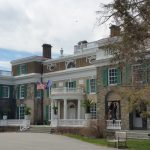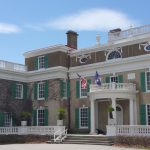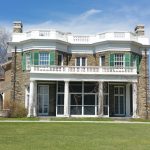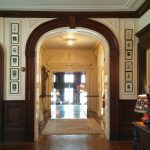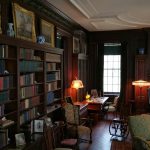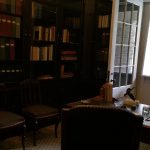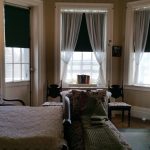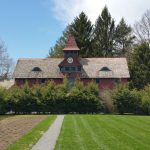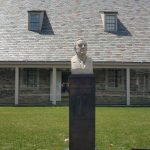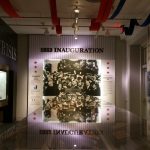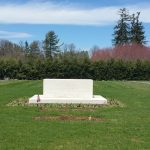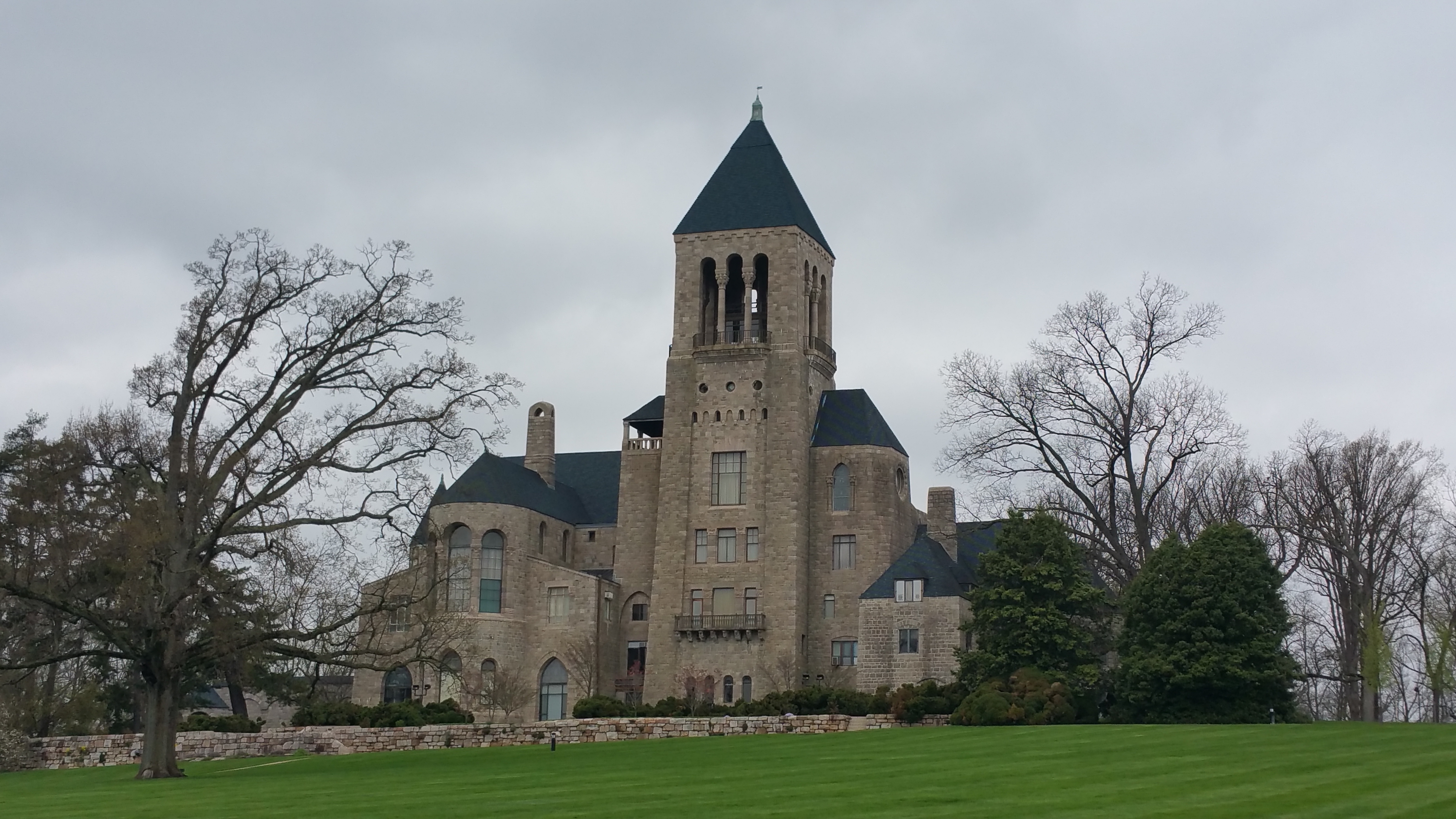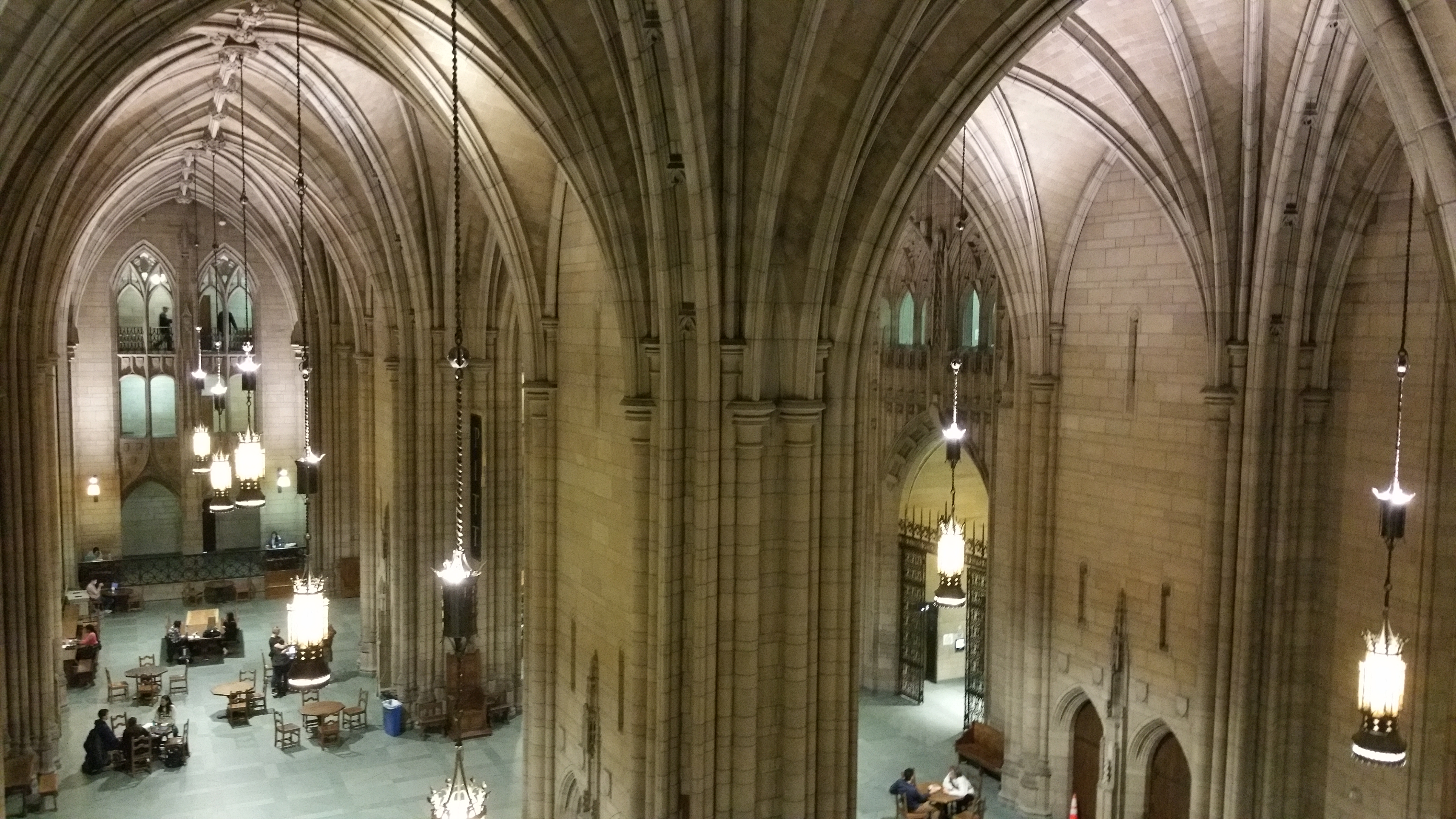
Franklin D. Roosevelt National Historic Site- Hyde Park, NY
Hyde Park is synonymous with Franklin Delano Roosevelt. It was where he was born, lived, campaigned, addressed the nation, and was buried. Never far from his mother’s watchful eye, it is where he brought his bride, Eleanor, and where he built his presidential library. Springwood, the president’s former home, is truly a remarkable estate; it is a one stop shop for architecture fans, politicos, and history junkies.
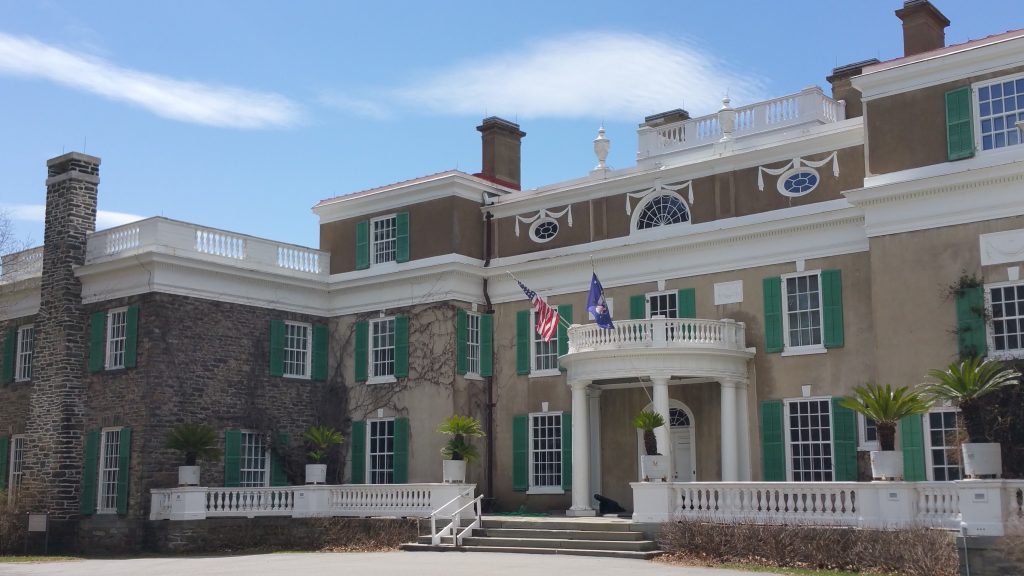
Located on a bluff along the Hudson, the land originally was part of a 1697 land grant from the Crown to a group of New York businessmen. Divided into nine riverfront plots, what would become Springwood was granted to William Creed. Passing through several owners over the next century, it is believed the central portion of today’s mansion was constructed as a Federal style farmhouse around 1800. In 1845, the property was purchased by Josiah Wheeler, who expanded and remodeled the home, transforming it into a 15 room Italianate, with front and rear piazzas.
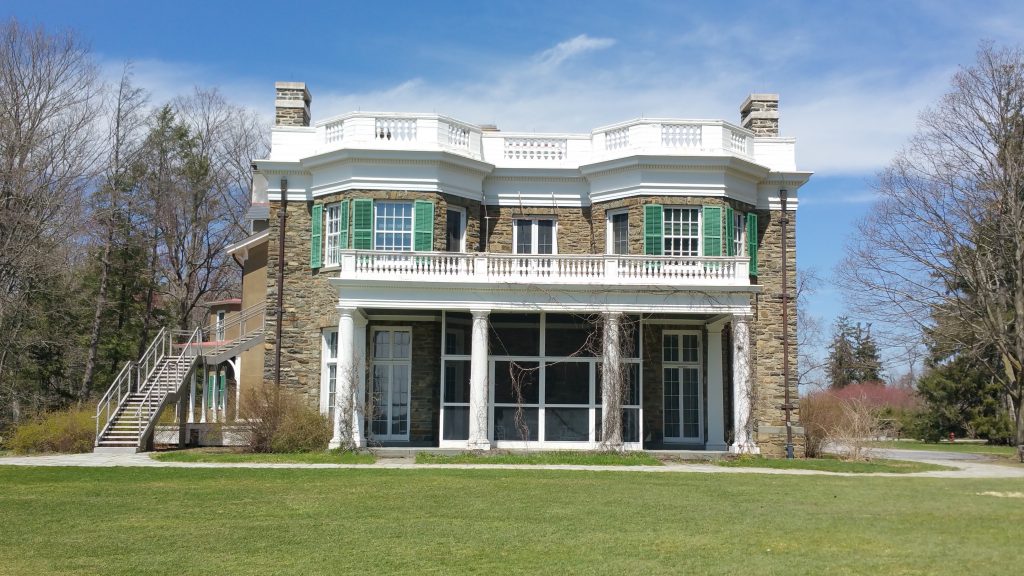
In 1866, Wheeler in turn sold the property to James Roosevelt, a businessman and horse breeder, for the then hefty sum of $40,000. The sale included 640 acres, a stable, and horse track. The elder Roosevelt once again enlarged the home, adding two rooms, as well as an adjacent carriage house. In 1882, Franklin Delano Roosevelt was born in the second story master bedroom, to Sara Roosevelt. Sara and Franklin would remain at Springwood on and off for the remainder of their lives.
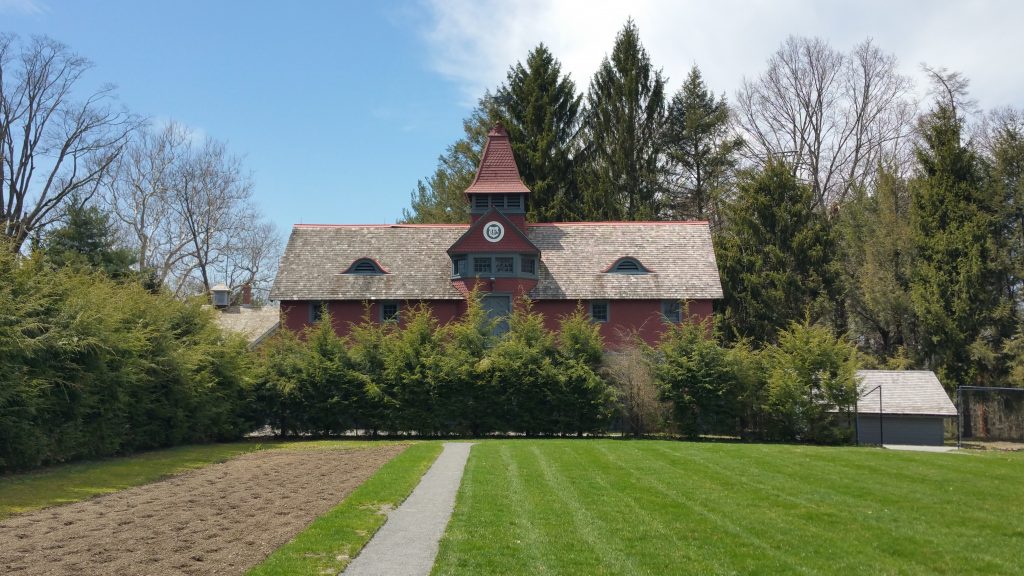
Franklin left the estate for boarding school at Groton, Harvard, and Columbia Law. He practiced law in New York City before marrying his fifth cousin Eleanor in 1905, and moving back to Springwood. Which, I am sure thrilled Eleanor. Sara was a bit overbearing to say the least, and very much ruled the Roosevelt Roost. By 1915, the home needed to be enlarged again to accommodate the growing family, as well as provide a more stately space for the nascent politician; Roosevelt had been elected to the New York State Senate in 1910, later served as the Assistant Secretary of Navy during World War I, then was elected Governor of New York in 1928.
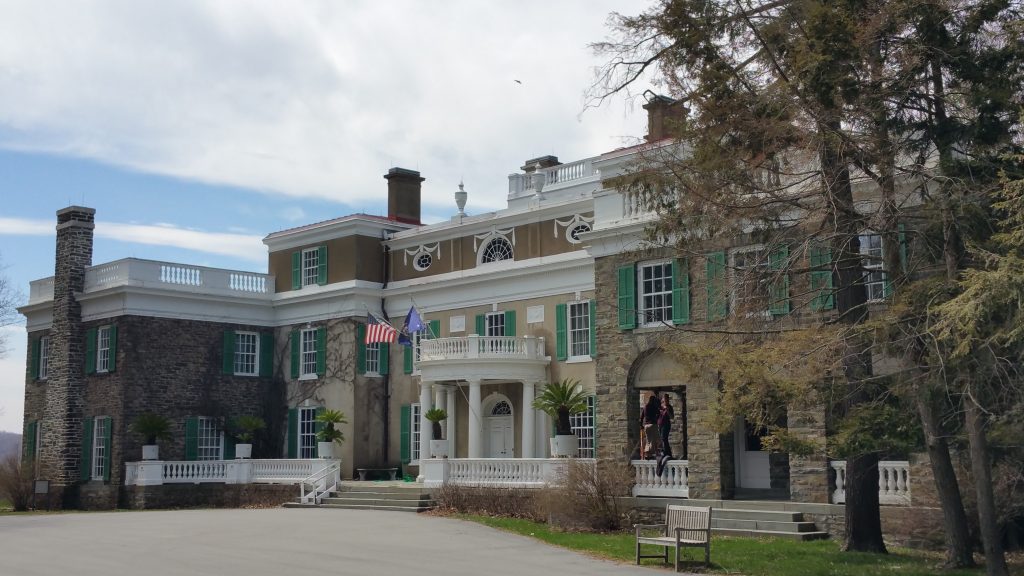
The remodel project was bankrolled by Sara, who commissioned New York City Beaux Arts architects Hoppin & Koen to enlarge the house. More than doubling its size, they added two large fieldstone wings, and a third story. The original portion of the house was stuccoed over, with a small portico added around the front door. Finally, a large balustrade enclosed fieldstone terrace was added, giving the property an almost Georgian appearance. This would be the final substantial alteration to the home.
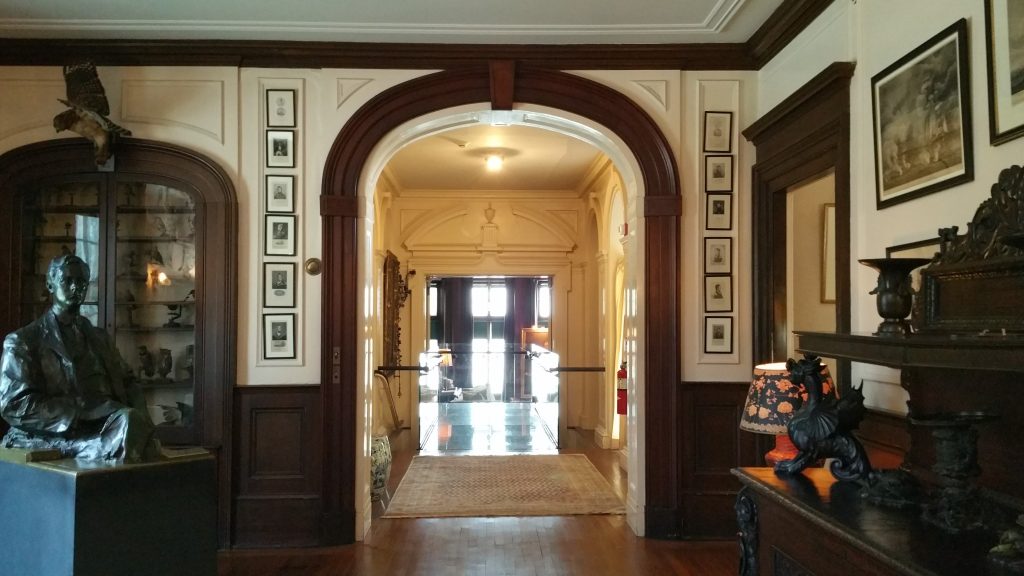
Inside, it is filled to the brim with FDRs collections, including a startling amount of taxidermied birds. The decor, while classic, can be best described as staid. Donated to the National Park Service in 1943, is very much a product of its design era, busy floral wallpaper and all. Not to say it isn’t attractive; the wood paneled living room is very grand. Of note, following his illness, FDR refused to alter the home’s architecture to accommodate his mobility issues; he did however use a manual rope elevator, which required an enormous amount of upper body strength.
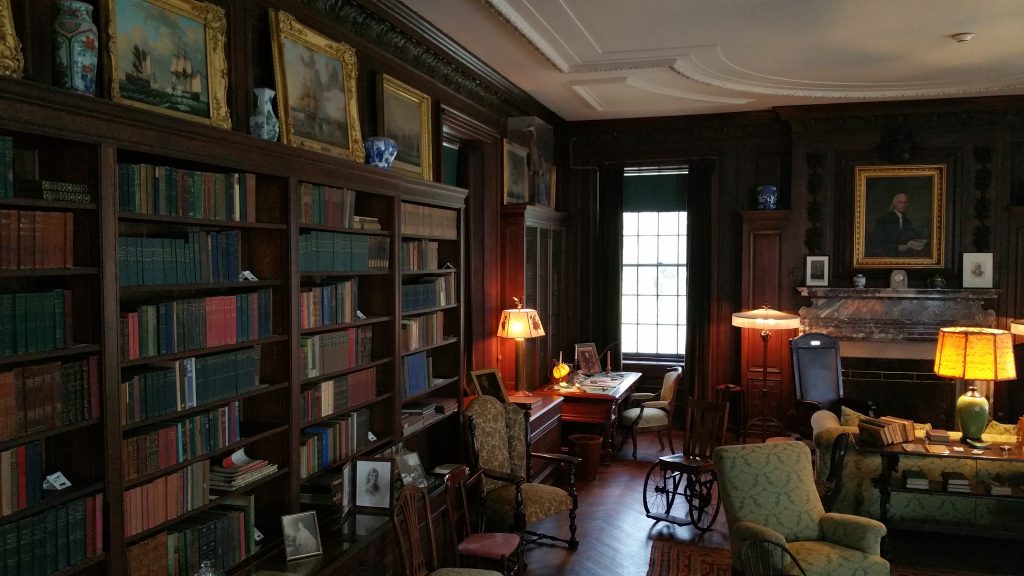
The house is only accessible via guided tour, which lasts about an hour, and apparently is very popular in the summer months. Fortunately, I went in the early spring, and was joined by just a few others. Given the smaller tour size, we were shown some additional rooms on the first floor, including the president’s small personal study. Here, he met with several world leaders, including Winston Churchill. With its exterior door, and book lined shelves, it is easy to imagine him working here.
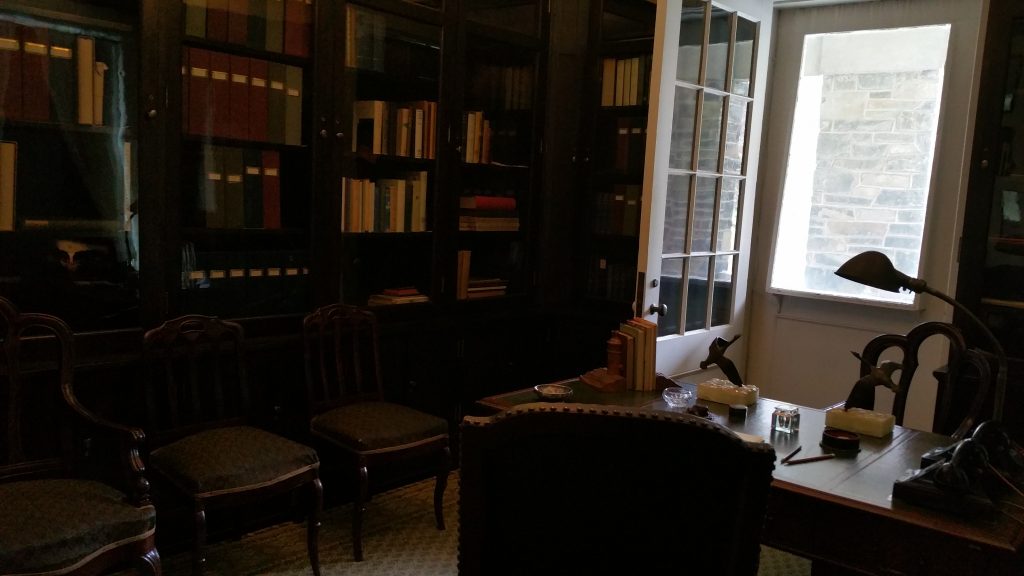
The second floor is home to several fairly boring bedrooms. At times they belonged to Sara, FDR, Eleanor, and multiple children. They all reflect a kind of early twentieth century sensibility. They may have had a lot of money, but they certainly wouldn’t flaunt it. That was for the Nouveau Riche, people like the Vanderbilt’s, with whom the Roosevelt’s refused to socialize, despite being neighbors.
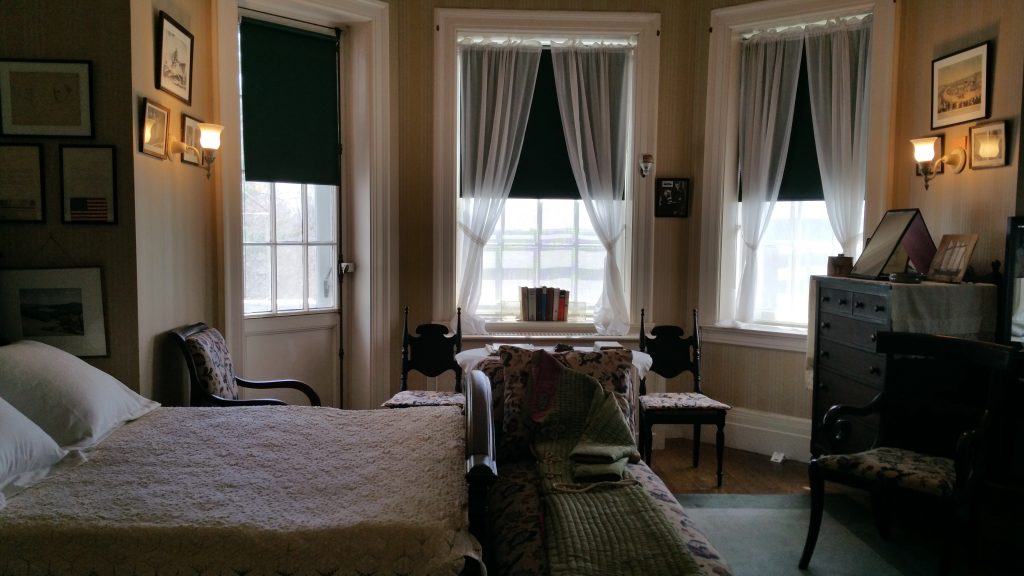
For history buffs, the Presidential library located on the grounds will prove much more interesting. Just steps away from the mansion, you can tour the library at your own pace. It covers the elections (all four), the Great Depression, the New Deal, and World War II. You could could easily spend all day viewing the material; fortunately, it’s a two day admission, so no need to rush. For those interested in serious research, the library holds all of FDR’s records, over 17 million pages, as well as 50,000 books, and 150,000 audiovisual items.
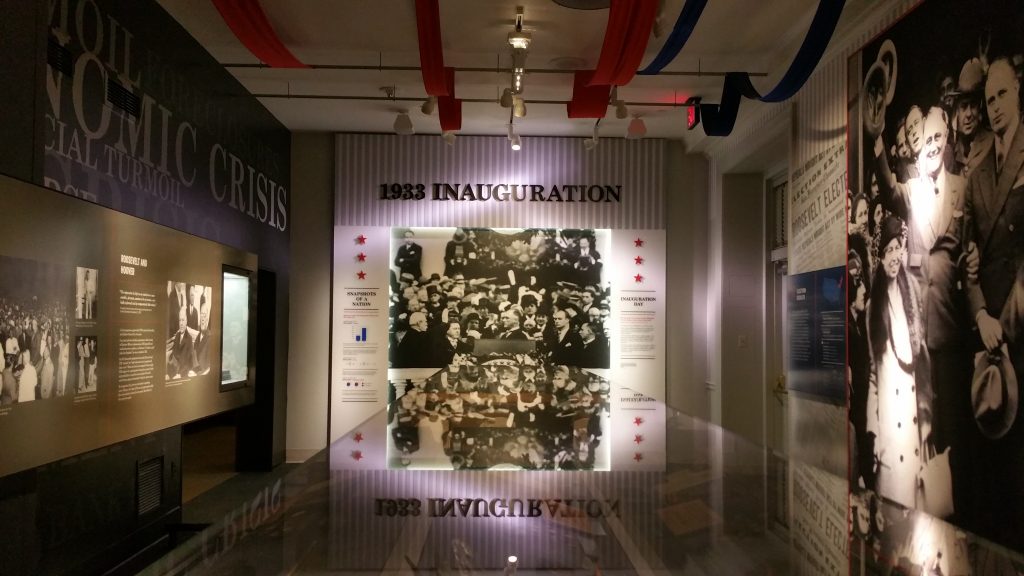
Built under the direction of FDR himself, between 1939-1940, it was constructed by Philadelphia contractor and LaSalle graduate John McShain, whose company built several Washington, D.C. landmarks, including the Pentagon, the Jefferson Memorial, the Kennedy Center, and Washington National Airport. It was constructed of Hudson Valley fieldstone, in the Dutch Colonial Style. Costing $376,000, Roosevelt donated the privately funded library to the Federal Government on July 4, 1940. The museum section of the building was opened to the public almost exactly one year later, on June 30, 1941, becoming the first presidential library in the United States.
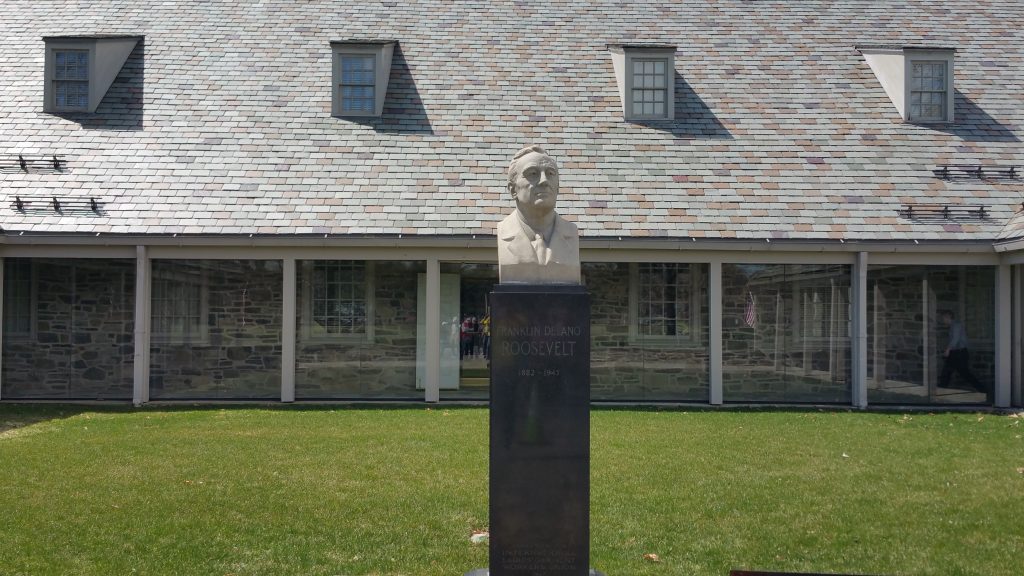
During his fourth term, Roosevelt frequently visited the museum, personally sorting through documents and memorabilia. He even delivered several “fireside chats” from the museum’s study. He last visited Hyde Park in March 1945; on April 12th, he suffered a fatal cerebral hemorrhage in Warm Springs, Georgia. His body was returned to Washington, D.C. by train, where over 500,000 people watched the procession from Union Station to the White House. He was brought to the East Room, where he remained for five hours, while mourners payed their final respects. Following a simple service, he was returned to Union Station, where a train transported him back to Hyde Park for burial. Upon her death in 1962, Eleanor would buried next to him.
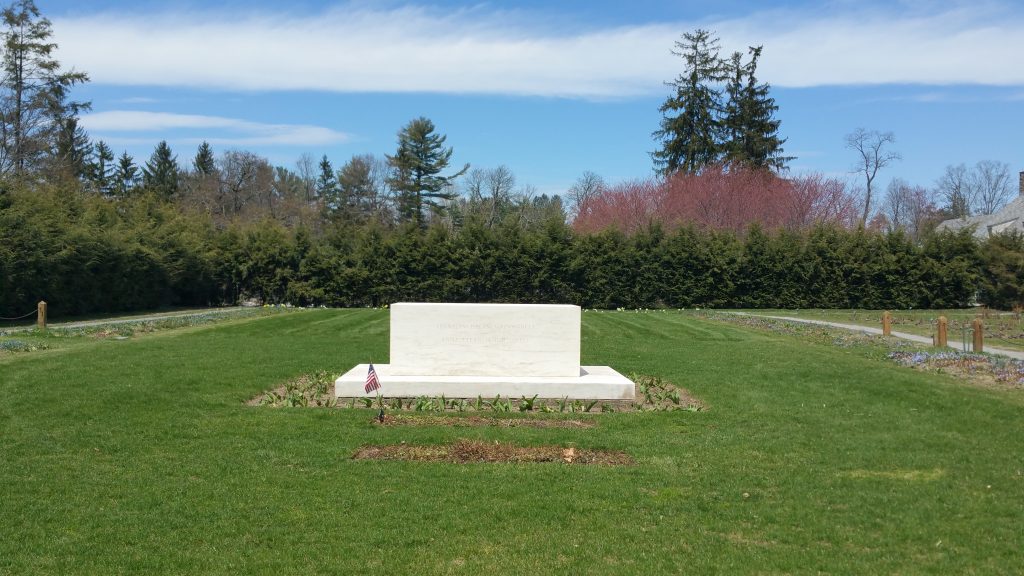
It is an all around fascinating property; the grounds, the home, the museum, and even the visitor’s center, which has a very pleasant cafe. Not everyone will have multiple days to spend here, but if you can, you should. As with everything else in our crowded world, visit in the winter or the early spring, and you will miss the masses. I virtually had the museum to myself, which was perfect.

